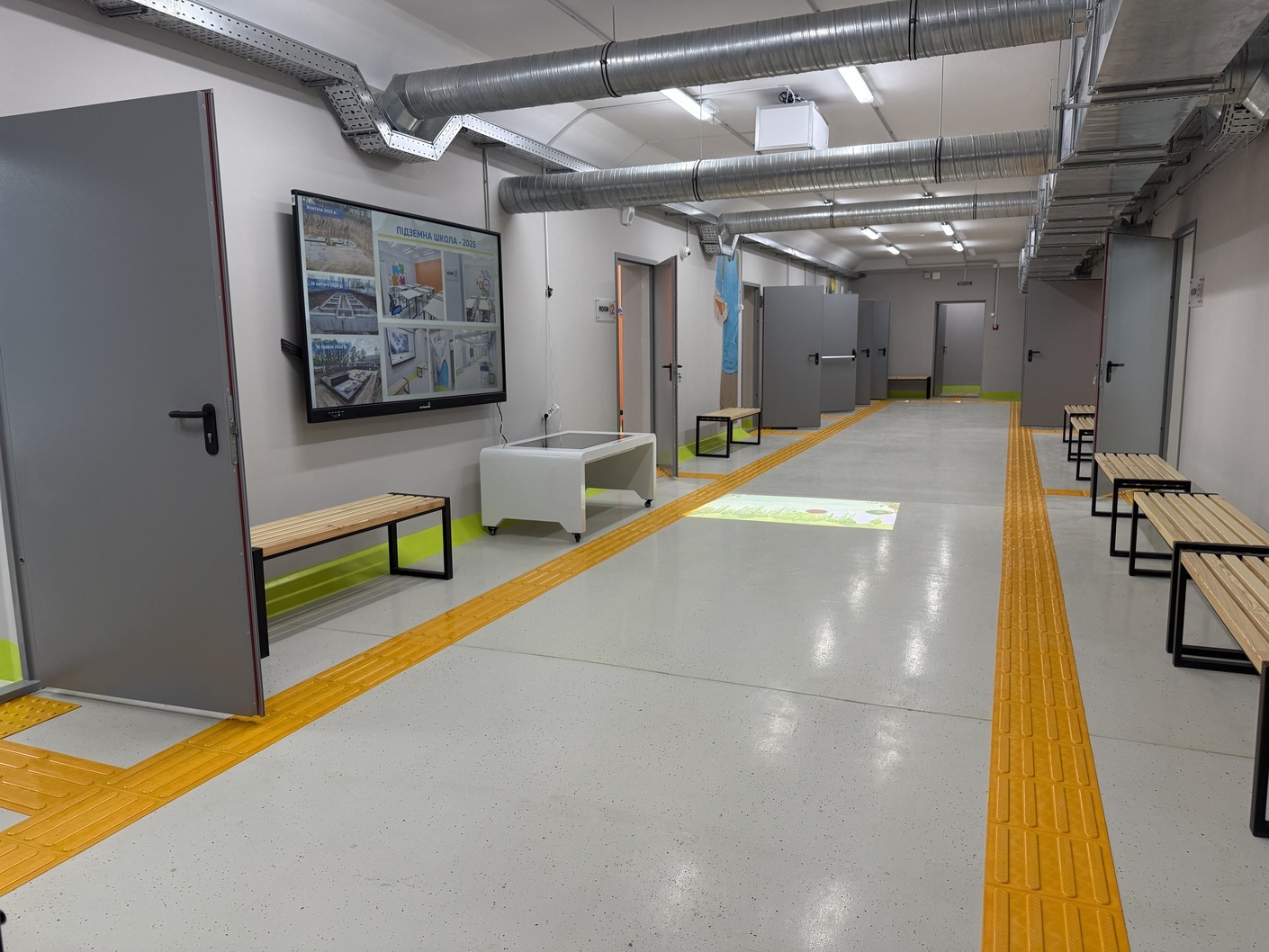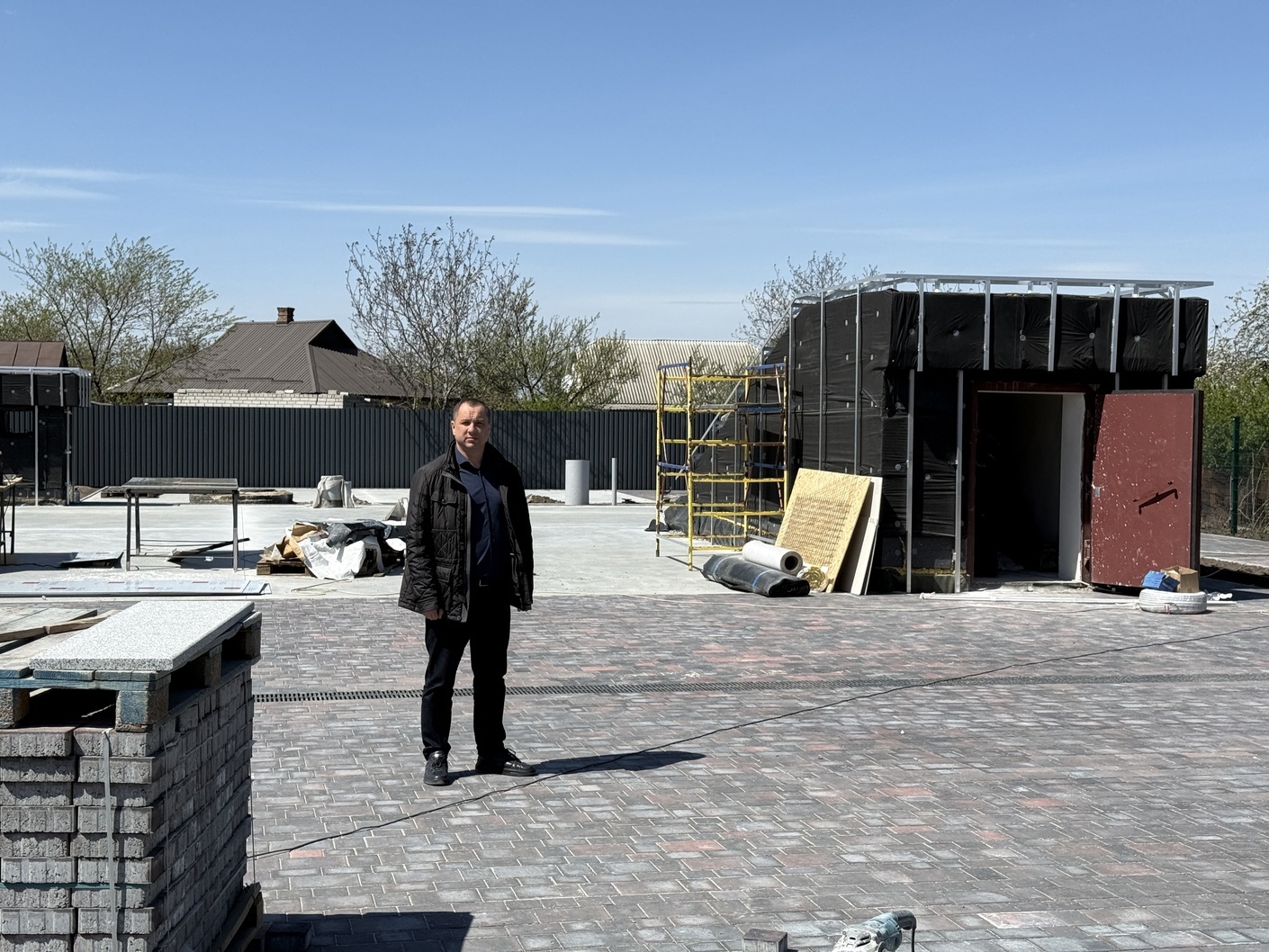Pisochyn community: Safe education as priority for future
Following the full-scale invasion, the Kharkiv region was subjected to constant shelling, with the Pisochyn community not being spared from enemy attacks. This disrupted the educational process, with children being forced to study online. Parents wanted them to return to face-to-face learning in safe school environments.
‘Children need live communication and education close to home. We realised that the only way to provide them with a sense of stability was to ensure that the school was safe,’ says Oksana Sasina, Principal of the Pisochyn Lyceum ‘Dzherelo’.
As part of the efforts to socialise children and transition to blended learning in light of the security situation in the Kharkiv region, large-scale projects to construct protective facilities are being implemented in the community with the backing of the Office of the President of Ukraine, the Cabinet of Ministers of Ukraine, and the Kharkiv Regional Military Administration.

Oleh Syniehubov, Head of the Kharkiv Regional Military Administration, and Oleh Chernobai, Mayor of Pisochyn, in one of the classrooms of the underground school
The issue of creating a safe educational space was considered during the development of the comprehensive spatial development plan for the Pisochyn community. This plan was developed by the Association of Land Management Specialists of Ukraine with the support of the American people through the Agriculture Growing Rural Opportunities (AGRO) programme, implemented by Chemonics International.
‘We managed to integrate the underground school project into the settlement’s engineering and transport systems, taking into account future residential development, social infrastructure facilities and communication networks. This comprehensive plan helped us to agree on all the details and secure support for implementing the project,’ said Oleh Chernobai, Mayor of Pisochyn.
along the corridors of the first underground school
The first underground school opened in February 2025. Designed for 594 schoolchildren, it was built in one of the community’s administrative districts, in an area of private housing where there were no shelters or civil defence structures previously. The decision to create an underground school was made to provide a safe space for continuous education for children, as well as serving as a shelter for local residents during air raid alerts.
The facility is equipped with everything necessary for children to stay there full-time, including classrooms, a medical centre, three emergency exits, barrier-free access and modern engineering systems. The school also has inclusive classrooms for nine children with special educational needs.

entrance to the second underground school
The successful implementation of the first underground school inspired the further development of the community’s educational infrastructure. A second underground school has now been built and opened in Pisochyn, confirming the sustainability and effectiveness of this planning approach. Located in an area of predominantly private housing, it sits next to the largest general secondary education institution. Initially, safe learning could not be organised at this location due to the lack of an adequate bomb shelter that would meet the requirements for blended learning. Consequently, the decision was made to construct an underground school to ensure the safety of children and provide this part of the community with access to quality education.
The new educational space is now inclusive and barrier-free. It has a lift, tactile tiles, accessible bathrooms and Braille navigation. Almost 300 schoolchildren, including those from internally displaced families for whom new housing is also planned in the community, can study here in two shifts.
Oleh Chornobai, Mayor of Pisochyn, at the start of construction of the second underground school
Both educational institutions have become a safe learning environment for children and a vivid example of how strategic spatial planning can help communities to develop, even in difficult wartime conditions. Thanks to the underground schools, over 2,000 children will have the opportunity to study in a blended format in the 2025–26 academic year. The number of first-graders has increased by 51 compared to the previous academic year: with 228 in 2024 and 279 in 2025.
Construction of an underground kindergarten
The Pisochyn community’s successful experience has set an example for the entire region. Currently, with the support of the Office of the President of Ukraine, the Cabinet of Ministers of Ukraine, and the Kharkiv Regional Military Administration, the community is constructing Ukraine’s first underground kindergarten.
The kindergarten is being built in the largest microdistrict of Pisochyn, home to over 16,000 people, many of whom are young families with small children. The project involves the construction of an underground protective shelter and a new above-ground kindergarten building, as well as the renovation of the existing kindergarten. Safe passageways will connect the shelter to the two preschool buildings, enabling children to reach a safe environment without going outside.
Yuliia Svyrydenko, Prime Minister of Ukraine, with Mykhailo Fedorov, First Deputy Prime Minister – Minister of Digital Transformation, and Oksen Lisovyi, Minister of Education and Science, at the construction site of an underground kindergarten

Construction of a new modern kindergarten building adjacent to the bomb shelter

Reconstruction of one of the largest pre-school educational institutions in the community
All facilities were designed in accordance with the comprehensive spatial development plan, enabling the rational organisation of the territory through the integration of new structures with existing infrastructure, transport networks, and engineering systems.
This is an example of effective spatial planning, in which the community uses systematic planning to create a safe and comfortable environment for children and residents, even in wartime.
24 November 2025
Згуртованість через різноманітність: як...
Авторки: Тетяна Лукеря, Олександра Койдель, Центр демократичної стійкості Київської школи економіки У попередніх...
24 November 2025
Прозора відбудова: чому інженер-консультант стає необхідністю для громад
Прозора відбудова: чому інженер-консультант...
21 листопада у Києві Міждержавна гільдія інженерів-консультантів провела стратегічну дискусію за участі керівництва...
24 November 2025
Презентація дослідження «Підконтрольність та підзвітність старост»
Презентація дослідження «Підконтрольність та...
27 листопада 2025 року о 9:30 відбудеться презентація дослідження «Підконтрольність та...
24 November 2025
Бучанський форум «Реформи. Децентралізація. Євроінтеграція»
Бучанський форум «Реформи. Децентралізація....
Комітет з питань організації державної влади, місцевого самоврядування, регіонального розвитку та...



